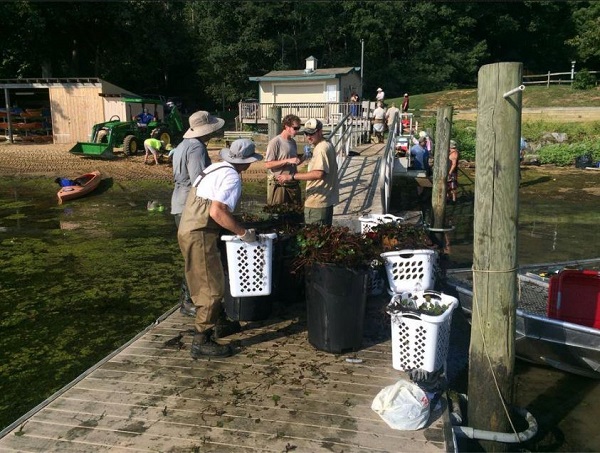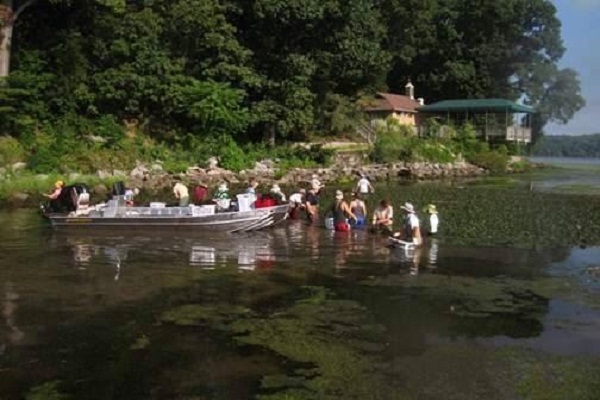

|
Emergency Water Chestnut Control |
|
A new infestation of an invasive old world plant called Water chestnut Trapa natans a.k.a. Water caltrop, Buffalo nut, Bat nut, Devil pod, Ling nut, Singhara, or Pani-phal has been discovered in Gunston Cove adjacent to the mouth of Accotink Creek. This infestation has the potential to expand exponentially and its immediate control is critical.
Many thanks to all the agency personnel and volunteers from Virginia Department of Game and Inland Fisheries, Northern Virginia Regional Parks, Fort Belvoir, Chesapeake Bay Foundation, Virginia Master Naturalists, U.S. Geological Survey, and Friends of Accotink Creek who assembled on September 5th, 2014, at the Pohick Bay boat ramp. Wading through waist-deep water, the team harvested 751 bushels of water chestnut weighing over 3.6 tons, eliminating the entire patch. Trapa natans is an annual plant, but seeds may remain viable in the mud, requiring vigilance and possible repeat removals for several years. Trapa natans seeds are edible, but are very different from the plant familiar in Chinese food which is also known as Water chestnut, Eleocharis dulcis, eaten for its crisp corm. Virginia Department of Game and Inland Fisheries video about the project (with an introduction on Snakeheads) - September 8, 2014
The shrinking Water chestnut patch circled in yellow.

Moving the harvested weeds up the dock for disposal.

The Water chestnut team immersed in their task.

| |